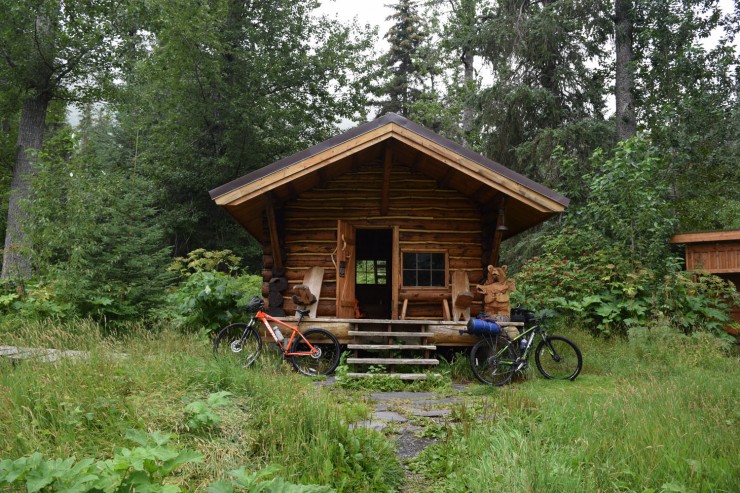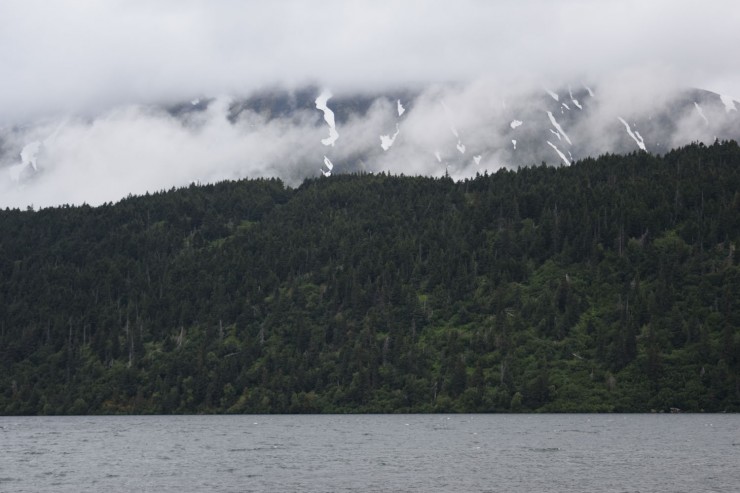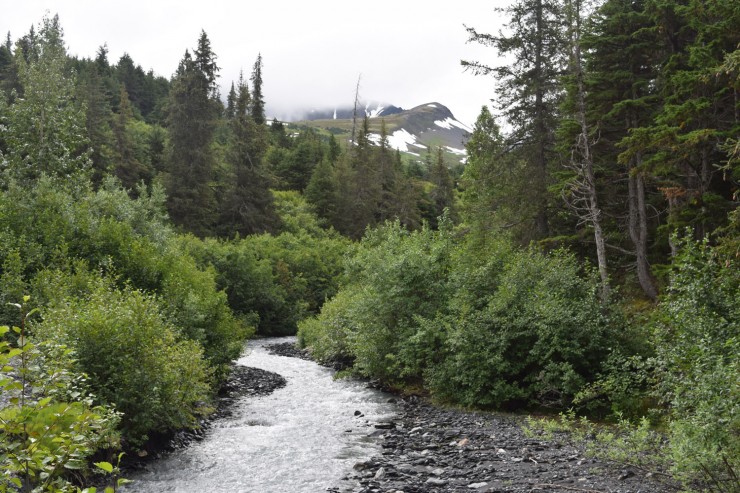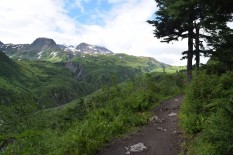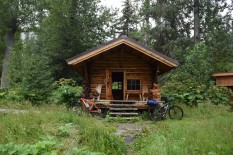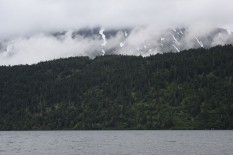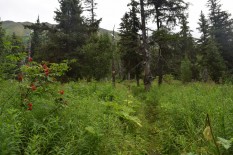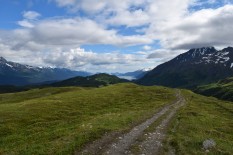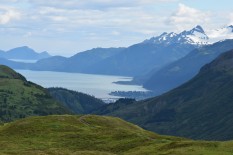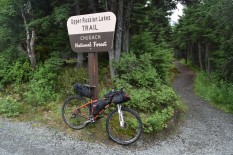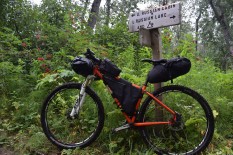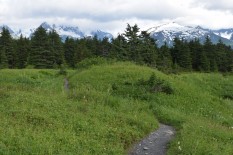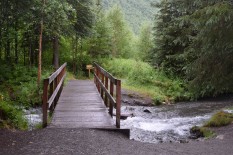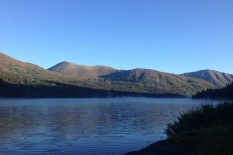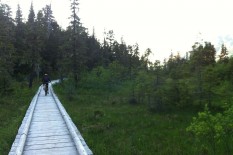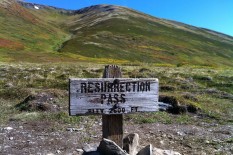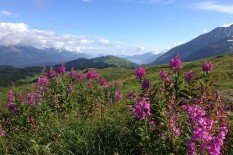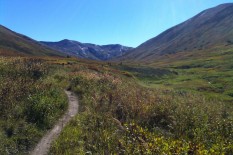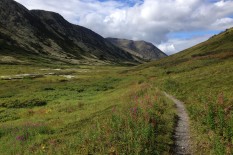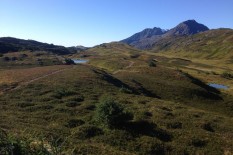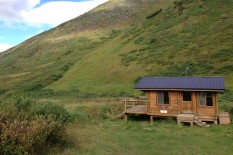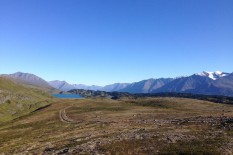The Kenai 250, Alaska
Distance
254 Mi.
(409 KM)Days
7
% Unpaved
60%
% Singletrack
55%
% Rideable (time)
90%
Total Ascent
21,000'
(6,401 M)High Point
2,721'
(829 M)Difficulty (1-10)
6?
- 5Climbing Scale Moderate83 FT/MI (16 M/KM)
- -Technical Difficulty
- -Physical Demand
- -Resupply & Logistics
Contributed By
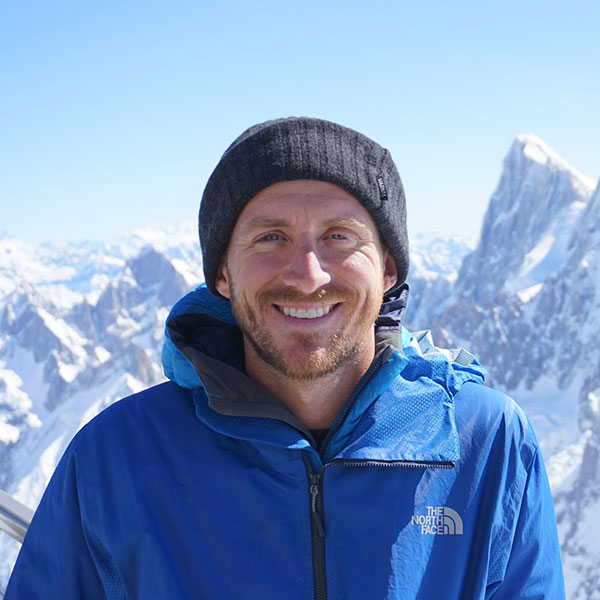
Conor Canaday
Guest Contributor
Conor is a midwest-born dirtbag seeing the world by bike. He’s a fan of all human powered adventures, but would rather hike with a bike than without.
Given how wild and remote most of Alaska is, there are few regions within the state that offer the ability to link up great singletrack into one continuous route. The Kenai Peninsula, located in south central Alaska, has some of the highest density of rideable singletrack alongside many of Alaska’s most incredible scenery offering visitors and locals alike the ability to create a magnificent multi-day tour.
This particular route is a version of the annual unsupported mountain bike race which has taken place since 2013. Each June, local cyclists gather in Hope, Alaska to pit themselves against each other, the unforgiving terrain, and the unpredictable weather. While many each year fail to complete the daunting route, those who have been successful have brought the course record to under a day and a half. Due to the mixed nature of the route balancing singletrack with paved road connections, the route easily lends itself to a longer, less demanding tour spreading the route out over a week. This route is organized as the original race route starting and ending in Hope, however, the route is easily altered to begin and end in other locations such as Seward or Cooper Landing by simply reorganizing the order of trails.
Riders on the Kenai 250 can expect to be challenged — and equally rewarded — by the peninsula’s glacial topography with steep climbs and descents at each trailhead. Short, but steep climbs take riders above tree line and into tundra quickly where views include rugged ridgelines, pristine fjords, and alpine lakes. As riding anywhere in Alaska, riders should be prepared for rapidly changing weather, wildlife encounters (including bears and moose), and minimal access to resources. Self-sufficiency and proper planning are not only encouraged, but required for backcountry travel in the Last Frontier.
Submit Route Alert
As the leading creator and publisher of bikepacking routes, BIKEPACKING.com endeavors to maintain, improve, and advocate for our growing network of bikepacking routes all over the world. As such, our editorial team, route creators, and Route Stewards serve as mediators for route improvements and opportunities for connectivity, conservation, and community growth around these routes. To facilitate these efforts, we rely on our Bikepacking Collective and the greater bikepacking community to call attention to critical issues and opportunities that are discovered while riding these routes. If you have a vital issue or opportunity regarding this route that pertains to one of the subjects below, please let us know:
Highlights
Must Know
Camping
Food/H2O
Trail Notes
Resources
- Some of Alaska’s best singletrack, including the award-winning Lost Lake Trail
- The chance to ride on the historic Iditarod Trail from its original starting point in Seward.
- Route includes complete rides on classic trails such as the Resurrection Pass Trail, Russian Lakes Trail, Johnson Pass Trail, Lost Lake & Primrose Trails, Devils Pass Trail, and Iditarod Trails.
- Pavement sections include incredible vistas and opportunities to visit three Alaskan communities.
- Close access to the Kenai Fjords National Park for rest day activities
- Abundant wildlife and fauna, both a prize to see in person and an added challenge while riding.
When to go
- The annual race takes place in late June around the summer solstice offering almost 24 hours of daylight, however the rest of summer months offer almost unlimited daylight riding as well.
- Timing for this route is limited between late May (typically the earliest point when most snow will have melted) through September (when trails are overgrown and snow typically begins accumulating again). July is the most ideal time for riding with ample daylight and driest* weather. *Southcentral Alaska is a rainforest, so dry is relative…
- Being a lush rainforest, trails can become wet and almost overgrown most times of the year but more likely so in late summer (August and September).
Logistics
- Anchorage is the largest and closest Alaskan city to the Kenai Peninsula. Direct flights can be found on multiple airlines from many US cities.
- There are regular bus and train routes running between Anchorage and Seward making Seward an easy starting location. Otherwise, it would be simple to rent a car in Anchorage and park anywhere near the route to start riding.
- Although they are slower on the pavement sections, wide tires are recommended to help in wet or snowy conditions. Tires above 2.25” are ideal with many local riders preferring fat tires.
Dangers and Annoyances
- Bears need to be considered and planned around. Bear spray can be easily found in Anchorage.
- Moose encounters should be taken cautiously, if provoked they can be as dangerous as bears if not more.
- Although the trails connect via well-used paved roads, while on the trails you will be far from help without cell reception and need to plan accordingly.
- Most singletrack on the route lies within the Chugach National Forest where permits are not required for access.
- The US Forest Service operates and maintains most of the trails, campgrounds, and cabins on the peninsula.
- Cabins along the route can be rented in advance at recreation.gov, but are often booked in the high summer season.
- Private campgrounds can be found along the main roads.
- Backcountry campsites along the route typically don’t have amenities, but will occasionally have bear resistant lockers. Established campgrounds scattered along the paved roadways typically have bear lockers, potable water, pit toilets, etc.
- Hope, AK: the Seaview Cafe runs a small campground and offers solid food and beer all week and great music on weekends.
- Cooper Landing, AK: you can get groceries/do laundry/charge electronics at Wildman’s, but your best eating out option is the barbecue at Sackett’s.
- Seward, AK: this is the largest town on route with countless food and lodging options. Highest quality food goes to The Cookery, best pub fare can be found at Seward Brewing Company, and classic touristy seafood is best at Chinooks.
- There are almost countless treatable water sources along the route. Bring iodine, a filter, or boil large amounts for the following day at camp each night.
- All trails in the Kenai Peninsula follow a similar topography; they start with a climb from the trailhead up to a pass or plateau, generally have a rolling higher elevation and then drop back down to sea level with a well-earned descent.
- Trails on the Kenai generally have strong growth at their lowest elevation but then pop above tree line with rewarding views quite rapidly.
- Depending on snowmelt, it is likely you will encounter water crossings with varying conditions. At times deep, fast, and ice cold. Otherwise, there are no drawn out hike-a-bikes, only short sections around technical terrain.
Additional Resources
- The official Kenai 250 race website
- Chugach National Forest
- Recreation.gov for forest service cabin rentals
- Wandering by Bicycle’s trip report
- Trail Hunter: Lost Lake video
- Seward Bike Shop. Ron (owner) is a great resource on trail conditions. (907) 224-2448
Terms of Use: As with each bikepacking route guide published on BIKEPACKING.com, should you choose to cycle this route, do so at your own risk. Prior to setting out check current local weather, conditions, and land/road closures. While riding, obey all public and private land use restrictions and rules, carry proper safety and navigational equipment, and of course, follow the #leavenotrace guidelines. The information found herein is simply a planning resource to be used as a point of inspiration in conjunction with your own due-diligence. In spite of the fact that this route, associated GPS track (GPX and maps), and all route guidelines were prepared under diligent research by the specified contributor and/or contributors, the accuracy of such and judgement of the author is not guaranteed. BIKEPACKING.com LLC, its partners, associates, and contributors are in no way liable for personal injury, damage to personal property, or any other such situation that might happen to individual riders cycling or following this route.
Please keep the conversation civil, constructive, and inclusive, or your comment will be removed.








